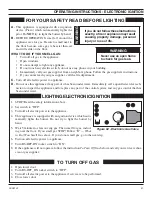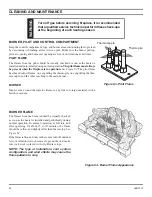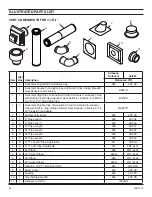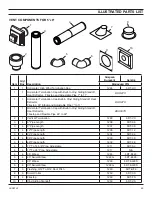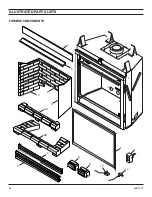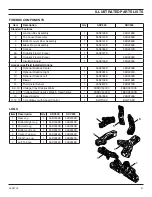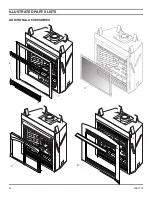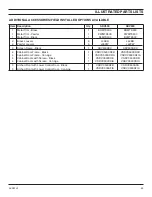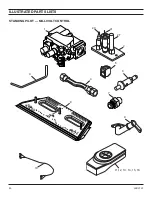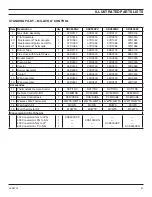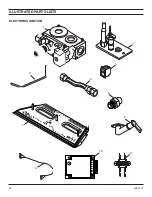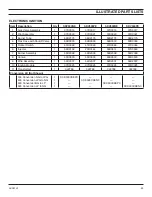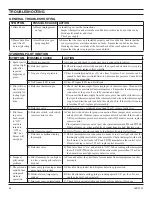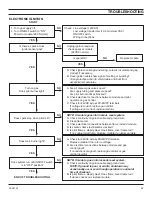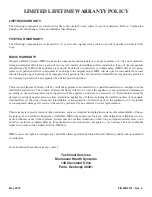
56D2161
55
ELECTRONIC IGNITION
TROUBLESHOOTING
START
1. Turn gas supply off.
2. Turn ON/OFF switch to “ON”
Power to module (24V Normal)
YES
Is there a spark across
ignitor sensor gap?
YES
Turn on gas.
Does pilot burner light?
YES
Does spark stop when pilot is lit?
YES
Does main burner light?
YES
Does system run until ON/OFF switch
is in “OFF” position?
YES
END OF TROUBLESHOOTING
Check: Line voltage (120VAC)
Low voltage transformer (19.5 minimum VAC)
ON/OFF
switch
Wiring
connections
Unplug ignition lead and
check spark at module
(24VAC
normal).
Is spark OK?
NO
Replace
module
YES
A. Check ignition cable ground wiring, ceramic insulator and gap.
Correct if necessary.
B. Does ignition cable show signs of melting or buckling?
Take protective action to shield cable and boot from
excessive temperatures.
A. Are all manual gas valves open?
Are supply tubing and pressure good?
Are pilot burner orifices blocked?
B. Check electrical connections between module and pilot
operator on gas control.
C. Check for 24VAC across PV-MVPV terminals.
If voltage is correct, replace gas control.
If voltage is not correct, replace module.
NOTE: If module goes into lockout, reset system.
A. Check continuity of ignition cable and ground wire.
B. Clean flame rod.
C. Check electrical connections between flame rod and module.
D. Is ceramic flame rod insulator cracked?
E. Is pilot flame a steady blue? Does flame cover flame rod?
If not, adjust pilot flame. Replace module if problem persists.
A. Check for 24VAC across MV-MVPV terminal.
Replace module if there is no voltage.
B. Are electrical connections between module and gas
control good?
If connections are good, replace gas control or gas
control operator.
NOTE: If module goes into lockout, reset system.
A. Check continuity of ignition cable and ground wire.
NOTE: If ground is poor or erratic, shutdown may
occasionally occur even though operation is normal at
time of checkout.
B. Is pilot flame a steady blue? Does flame cover flame rod?
If above checks out, replace module.
NO
NO
NO
NO
NO
NO

